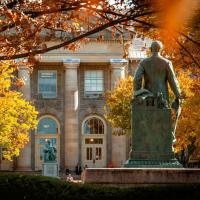
 Department Homepage
The College of Arts & Sciences
Department Homepage
The College of Arts & Sciences
Acclimate or die: Book examines disease in the British Empire
Historian Suman Seth explores the intersection of disease theory and race in the British Empire.




